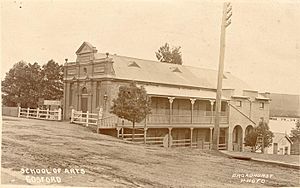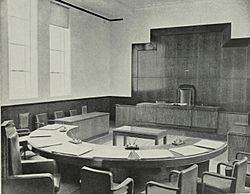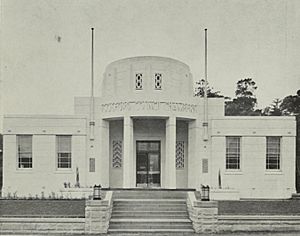Central Coast Council (New South Wales) facts for kids
Quick facts for kids Central Coast CouncilNew South Wales |
|||||||||||||||
|---|---|---|---|---|---|---|---|---|---|---|---|---|---|---|---|
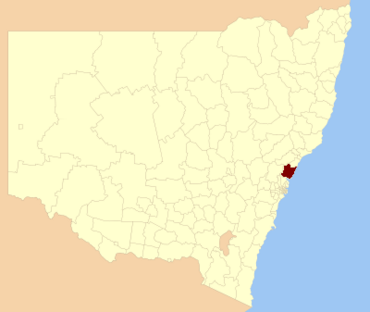
Location in New South Wales
|
|||||||||||||||
| Population | 346,596 (2021 census) | ||||||||||||||
| • Density | 206.18/km2 (534.0/sq mi) | ||||||||||||||
| Established | 12 May 2016 | ||||||||||||||
| Area | 1,681 km2 (649.0 sq mi) | ||||||||||||||
| Time zone | AEST (UTC+10) | ||||||||||||||
| • Summer (DST) | AEDT (UTC+11) | ||||||||||||||
| Administrator | Rik Hart | ||||||||||||||
| Council seat | Gosford and Wyong | ||||||||||||||
| Region | Central Coast | ||||||||||||||
| State electorate(s) |
|
||||||||||||||
| Federal Division(s) | |||||||||||||||
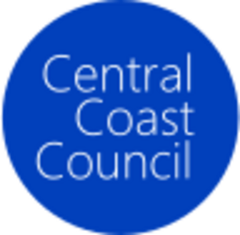 |
|||||||||||||||
| Website | Central Coast Council | ||||||||||||||
|
|||||||||||||||
The Central Coast Council is a local government area in the Central Coast region of New South Wales, Australia. It is located near the Pacific Highway and the Pacific Ocean. This council was created on May 12, 2016. It was formed when the City of Gosford and Wyong Shire Councils joined together.
The council covers an area of about 1681 square kilometers. To the east, it borders the Tasman Sea. To the south, it meets Broken Bay and the Hawkesbury River. The western side is next to Yengo National Park. The Central Coast Council has over 40 beaches. It also has more than 90 kilometers of coastline. In 2021, about 346,596 people lived in this area.
The last elected Mayor of the Central Coast Council was Lisa Matthews. She was chosen on September 23, 2019. On October 30, 2020, the Minister for Local Government, Shelley Hancock, suspended the elected council. She then appointed Rik Hart as the new Administrator.
Contents
Towns and Suburbs of the Central Coast
The Central Coast Council area includes a busy coastal strip. This area stretches from the Hawkesbury River in the south. It is bordered by the Watagan Mountains to the west. To the north, it reaches Lake Macquarie. The Pacific Ocean is to the east. There is also a large, less populated area to the west. This western part is mostly natural bushland.
Here are some of the towns and villages in the Central Coast Council area:
- Alison
- Avoca Beach
- Bar Point
- Bateau Bay
- Bensville
- Berkeley Vale
- Blackwall
- Blue Bay
- Blue Haven
- Booker Bay
- Bouddi
- Box Head
- Budgewoi
- Budgewoi Peninsula
- Buff Point
- Bushells Ridge
- Calga
- Canton Beach
- Cedar Brush Creek
- Central Mangrove
- Chain Valley Bay
- Charmhaven
- Cheero Point
- Chittaway Bay
- Chittaway Point
- Cogra Bay
- Colongra
- Copacabana
- Crangan Bay
- Daleys Point
- Davistown
- Dooralong
- Doyalson
- Doyalson North
- Durren Durren
- East Gosford
- Empire Bay
- Erina
- Erina Heights
- Ettalong Beach
- Forresters Beach
- Fountaindale
- Frazer Park
- Glenning Valley
- Glenworth Valley
- Gorokan
- Gosford
- Green Point
- Greengrove
- Gunderman
- Gwandalan
- Halekulani
- Halloran
- Hamlyn Terrace
- Hardys Bay
- Holgate
- Horsfield Bay
- Jilliby
- Kangy Angy
- Kanwal
- Kariong
- Kiar
- Killarney Vale
- Killcare
- Killcare Heights
- Kincumber
- Kincumber South
- Kingfisher Shores
- Koolewong
- Kulnura
- Lake Haven
- Lake Munmorah
- Lemon Tree
- Little Jilliby
- Lisarow
- Little Wobby
- Long Jetty
- Lower Mangrove
- MacMasters Beach
- Magenta
- Mangrove Creek
- Mangrove Mountain
- Mannering Park
- Mardi
- Marlow
- Matcham
- Moonee
- Mooney Mooney Creek
- Mooney Mooney
- Mount Elliot
- Mount White
- Narara
- Niagara Park
- Norah Head
- Noraville
- North Avoca
- North Gosford
- Ourimbah
- Palm Grove
- Palmdale
- Patonga
- Pearl Beach
- Peats Ridge
- Phegans Bay
- Picketts Valley
- Point Clare
- Point Frederick
- Point Wolstoncroft
- Pretty Beach
- Ravensdale
- Rocky Point
- St Huberts Island
- San Remo
- Saratoga
- Shelly Beach
- Somersby
- Spencer
- Springfield
- Summerland Point
- Tacoma
- Tacoma South
- Tascott
- Ten Mile Hollow (Eastern part)
- Terrigal
- The Entrance
- The Entrance North
- Toowoon Bay
- Toukley
- Tuggerah
- Tuggerawong
- Tumbi Umbi
- Umina Beach
- Upper Mangrove
- Wadalba
- Wagstaffe
- Wallarah
- Wamberal
- Warnervale
- Watanobbi
- Wendoree Park
- West Gosford
- Wisemans Ferry (North-eastern part)
- Wondabyne
- Woongarrah
- Woy Woy
- Woy Woy Bay
- Wyoming
- Wyong
- Wyong Creek
- Wyongah
- Yarramalong
- Yattalunga
Who Lives on the Central Coast?
In 2021, the Central Coast local government area had 346,596 people. The average income for people living here was a bit lower than the national average.
Many people living on the Central Coast have English, Australian, Irish, or Scottish backgrounds. About 4.7% of the population are Australian Aboriginal. Most people speak English at home. Other languages spoken include Spanish, Mandarin, and Tagalog.
When it comes to religion, a growing number of people say they have no religion. The next largest groups are Catholic and Anglican.
How the Council Works
The Central Coast Council has fifteen Councillors. These councillors are elected to represent different areas called wards. There are five wards, and three councillors are elected from each ward. Councillors serve for a set term of four years. The Mayor is chosen by the councillors for two years. The Deputy Mayor serves for one year.
On October 30, 2020, the Minister for Local Government, Shelley Hancock, suspended the elected council. She appointed Dick Persson as the temporary Administrator. This happened because of serious financial problems within the council. Later, Rik Hart took over as Administrator on May 13, 2021. The Council meetings are held every two weeks at the Wyong Civic Centre.
Council Leaders Over Time
Here's a look at who has led the Central Coast Council:
| Role | Time in Office | Notes | |
|---|---|---|---|
| Administrator | Ian Reynolds | May 12, 2016 – September 26, 2017 | |
| Mayor | Jane Smith | September 26, 2017 – September 23, 2019 | |
| Lisa Matthews | September 23, 2019 – October 30, 2020 | ||
| Deputy Mayor | Chris Holstein | September 26, 2017 – September 23, 2019 | Was Mayor of Gosford from 2002–2010 |
| Jane Smith | September 23, 2019 – October 30, 2020 | ||
| Administrator | Dick Persson | October 30, 2020 – May 13, 2021 | Also Administrator for Northern Beaches Council |
| Rik Hart | May 13, 2021 – Present | ||
| General Manager/CEO | Time in Office | Notes | |
| Rob Noble | May 12, 2016 – September 20, 2017 | Acting General Manager of Wyong Shire before merger | |
| Brian Bell | September 20, 2017 – February 2, 2018 | General Manager of Lake Macquarie City Council before | |
| Brian Glendenning (Acting) | February 2, 2018 – July 2, 2018 | ||
| Gary Murphy | July 2, 2018 – November 30, 2020 | General Manager of Lismore City Council before | |
| Rik Hart (Acting) | November 3, 2020 – April 12, 2021 | ||
| David Farmer | April 12, 2021 – Present | ||
History of the Central Coast Council
Early Days
The land now known as the Brisbane Water was originally home to the Guringai people. The Darkingung people lived further inland.
In 1811, Governor Lachlan Macquarie gave the first land grant in the area. In 1839, Governor Sir George Gipps named the town of Gosford. It was named after his friend, The Earl of Gosford.
Local government started with magistrates in 1840. Then, in 1843, the Brisbane Water District Council was formed. This was an early attempt to have elected local councils. However, it didn't work well, mainly because people didn't like the new taxes. By 1855, this council stopped existing.
Gosford and Erina Councils
In 1886, residents asked for the "Borough of Gosford" to be created. This was approved, and the Borough of Gosford was officially formed on November 11, 1886. The first mayor was John Bennett Whiteway. Council meetings were held in the Gosford School of Arts building.
The rest of the area became the Erina Shire in 1906. It was divided into three sections. The first elected council met in December 1906.
In 1908, the Borough of Gosford merged with Erina Shire. This created a larger Erina Shire. The new Shire Council Chambers opened in Gosford in 1912.
Woy Woy Shire
Because Erina Shire was so big, some groups wanted their own local council. In 1921, people in the Woy Woy Peninsula area started working to separate. The Woy Woy Shire was officially formed on August 1, 1928. The first Council meeting was held in Woy Woy. A new Council Chambers building was opened in 1931.
However, the Woy Woy Shire Council faced financial problems. In 1940, the Minister for Local Government dismissed the council. An Administrator was appointed to manage things.
Gosford Municipality and Electricity Supply
In 1936, the Erina Shire Council also faced issues and was dismissed. An inquiry recommended that Gosford separate again. So, on October 24, 1936, the Municipality of Gosford was re-formed. It included the old Gosford area and some new parts. William Calman Grahame was elected as the first Mayor.
In 1938, Gosford got its first permanent town water supply. A new Gosford Council Chambers building was opened in 1939.
To provide electricity to the Central Coast, Gosford Municipality, Erina Shire, and Woy Woy Shire joined forces. They formed the Brisbane Water County Council in 1942. This council supplied electricity until 1980.
Gosford and Wyong Councils Form
In 1947, local government on the Central Coast changed again. Part of Erina Shire, all of Woy Woy Shire, and the Municipality of Gosford combined. This formed Gosford Shire. The rest of Erina Shire became Wyong Shire.
Wyong Shire Council first used temporary army huts as offices. Later, a new Council Administration Building was built in Wyong in 1959.
Both Gosford and Wyong Shires started their own library services. Gosford opened its first libraries in 1948. Wyong opened its first public library in 1959.
In 1974, the Gosford Council Chambers were replaced by a new building. On January 1, 1980, Gosford Shire officially became the City of Gosford.
The Central Coast Council Today
In 2015, the NSW Government suggested that Wyong Shire and Gosford City Councils should merge. This was to create one large council for the entire Central Coast region. Both councils agreed to this idea.
On May 12, 2016, the Central Coast Council was officially formed. It combined the two previous councils. The first meeting of the new council was held on May 25, 2016. An Administrator, Ian Reynolds, managed the council until the first election.
The first election for the new 15-member council was held on September 8, 2017. Six Labor, five Independent, and four Liberal councillors were elected.
Recent Administration Changes
On October 30, 2020, the Minister for Local Government, Shelley Hancock, suspended the elected council. This happened after it was revealed the council had a large debt. Dick Persson was appointed as the new temporary Administrator. His job was to help fix the council's financial problems. He worked with Rik Hart, who later became the Acting CEO.
In December 2020, Persson reported that the council had serious budget problems. He found that poor financial decisions had led to huge losses. He said that the elected council had not properly overseen the management. To fix this, he suggested selling assets, increasing rates, and reducing staff.
In January 2021, Persson's term as Administrator was extended. In March 2021, David Farmer was appointed as the new council CEO. Persson also suggested holding a public vote to reduce the number of councillors from 15 to 9.
In April 2021, Persson recommended that the suspended councillors should not return. He also suggested delaying the next election to allow for a formal inquiry. The government agreed to this. A public inquiry was started, and the elections were postponed. Rik Hart then took over as the new Administrator on May 13, 2021.
In February 2022, the inquiry's report was released. It recommended that the positions of the suspended councillors be declared vacant. It also suggested changes to how councils manage money and water services.
Images for kids



